What is this rock?
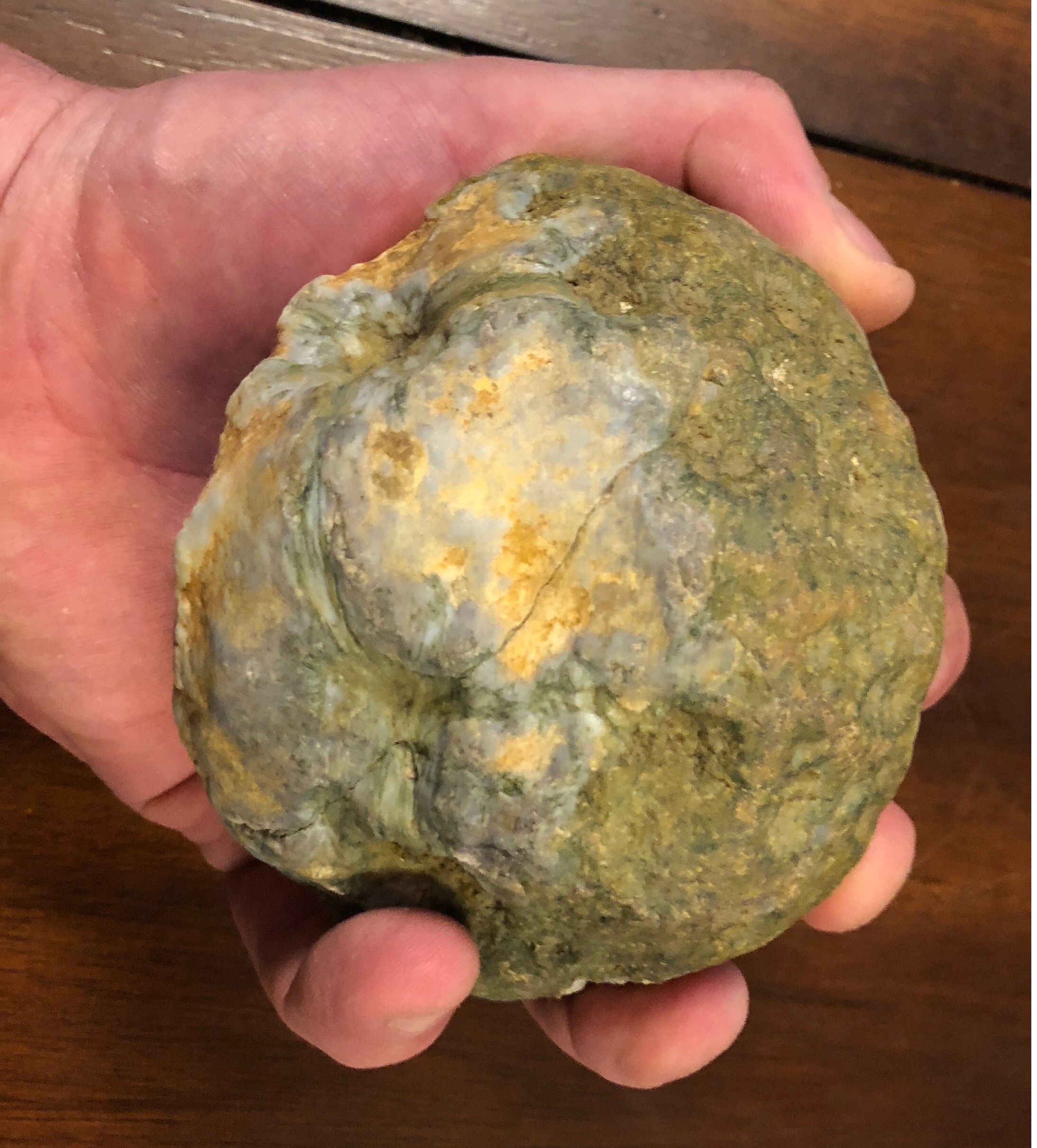
I found this rock last year in an area of Wyoming known for its petrified wood. This, however, is not normal wood, but I believe is it petrified “something”. I just don’t know what. Any suggestions are welcome.
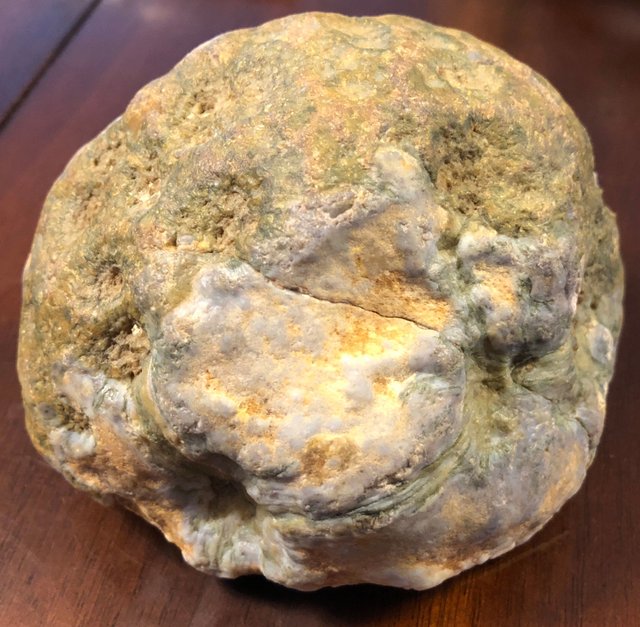
It defiantly appears to be organic in origin. The dimples are arranged in a somewhat geometric pattern around the surface, and there is a small straight crack connecting each dimple.
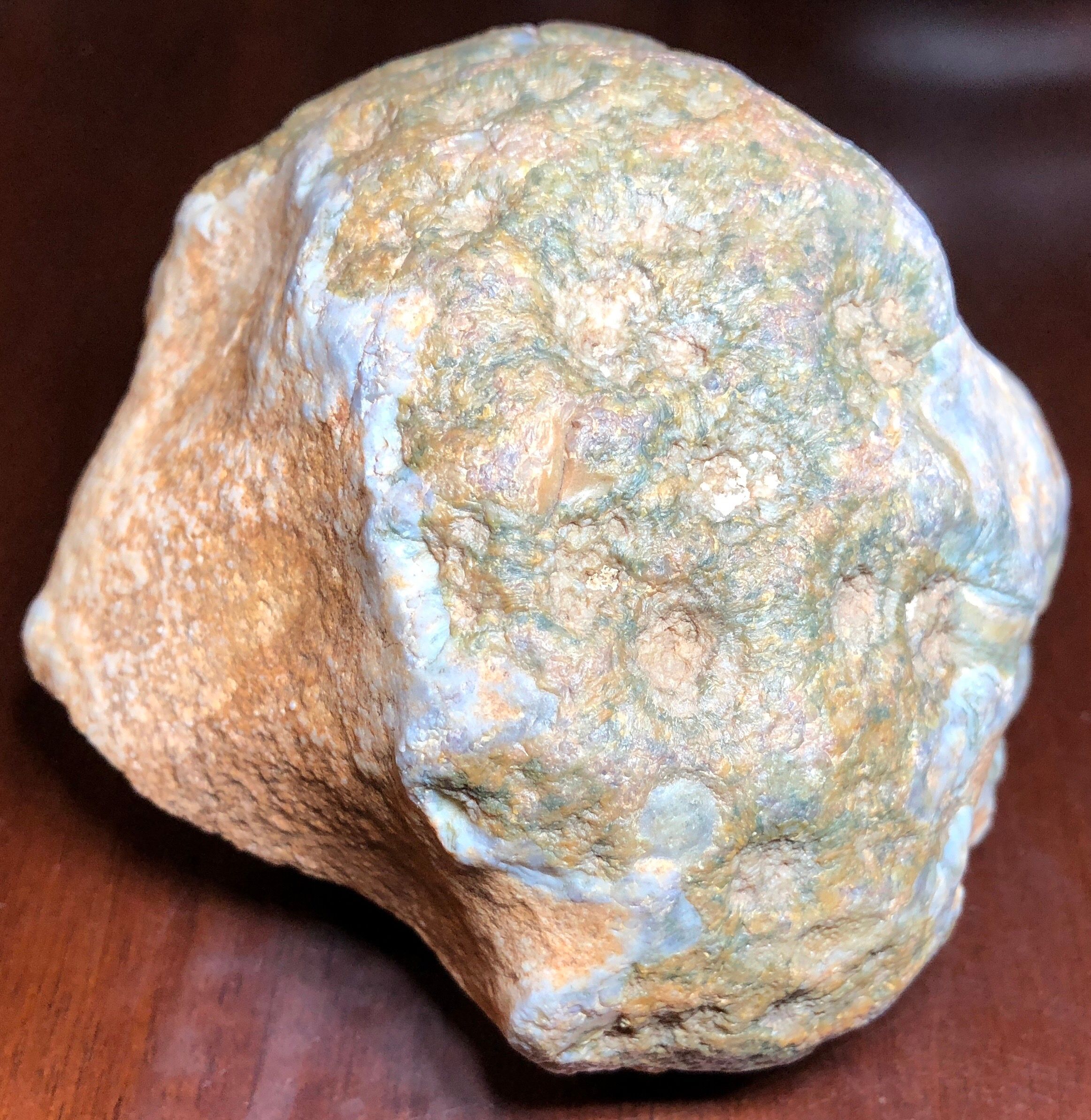
The coloring on this rock is unlike anything I’ve seen. White, purple, blue, green, and yellow. The greens look like moss, but I have scrubbed it clean, and the surface at least really is that color.
Now for the really fun part.
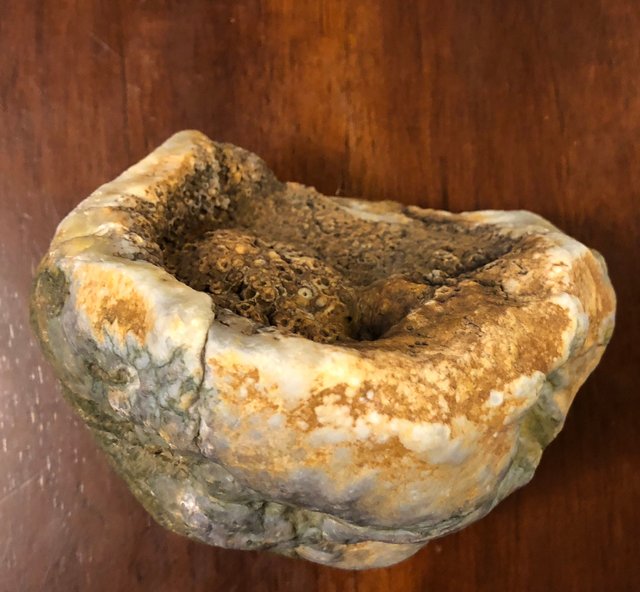
The inside of it is weird! And cool! This is where my understanding really starts to break down. It looks like a bunch of seeds inside it. But if the round things inside are seeds, what is the whole thing? A seed pod? An egg?
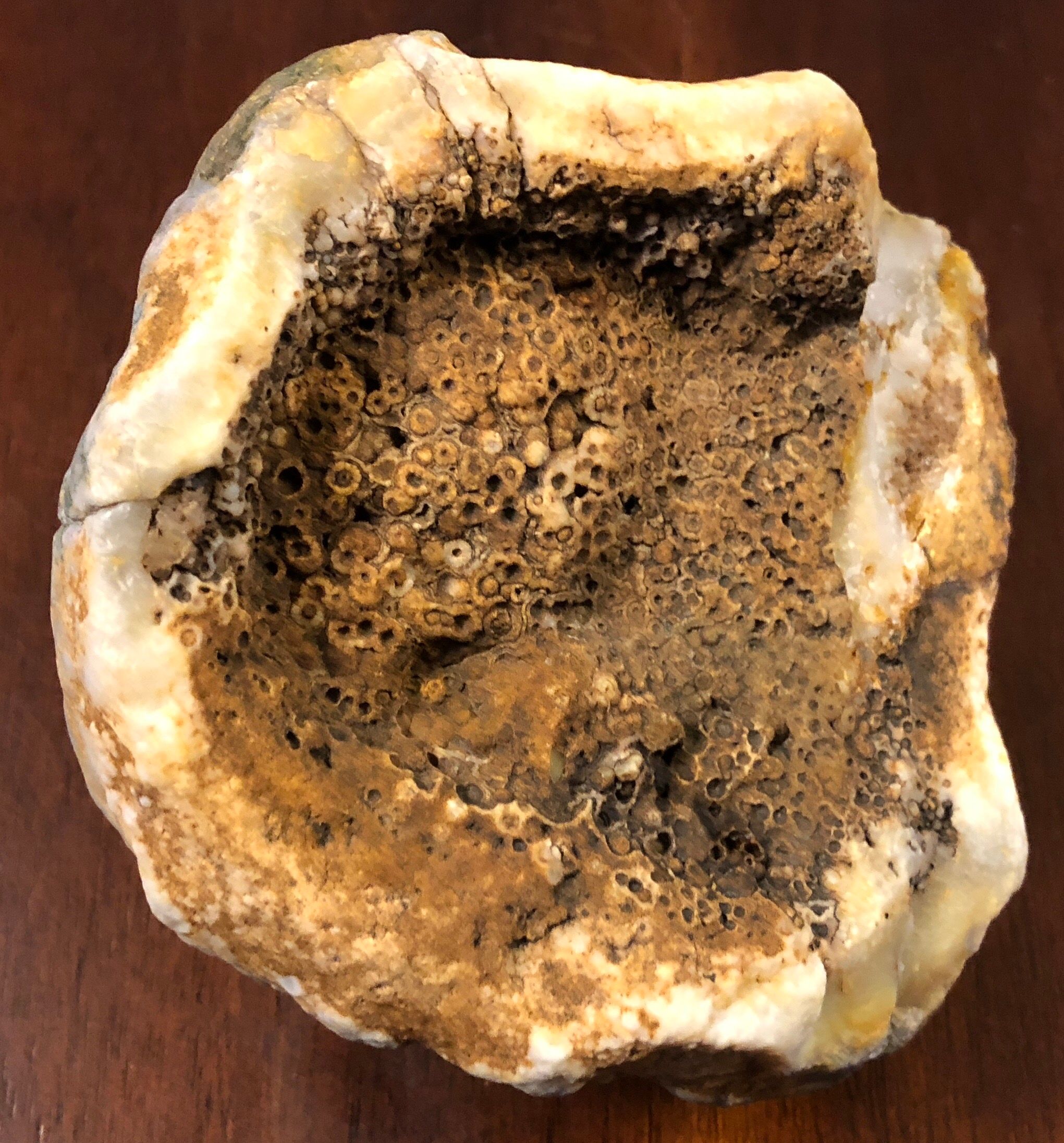
Here’s a better view of the inside. The shell appears to be agate, definatly silica based, though. If needed I can take better pics of any specific part to help identify it. If anyone can tell me, or even guess, what this is, that would be great.
Until then, I’m gonna keep calling it a Dragon’s Egg.
You received a 10.0% upvote since you are not yet a member of geopolis and wrote in the category of "geology".
To read more about us and what we do, click here.
https://steemit.com/geopolis/@geopolis/geopolis-the-community-for-global-sciences-update-4
Thank you, I am honored. I didn’t know of your group, but I’ll be joining soon.
What an amazing find! I think it almost looks like an agatized mushroom.
Whatever it is, it's agatized. An agate doesn't have to just be an agate. There are also agatized coral which are known to be found in florida. Some type of agatized "something" geode is possible as well. The inside looks really weird!
Thank you for using the #rockhound tag! Manually curated by @bitfiend
Looks like some kind of limestone nodule.
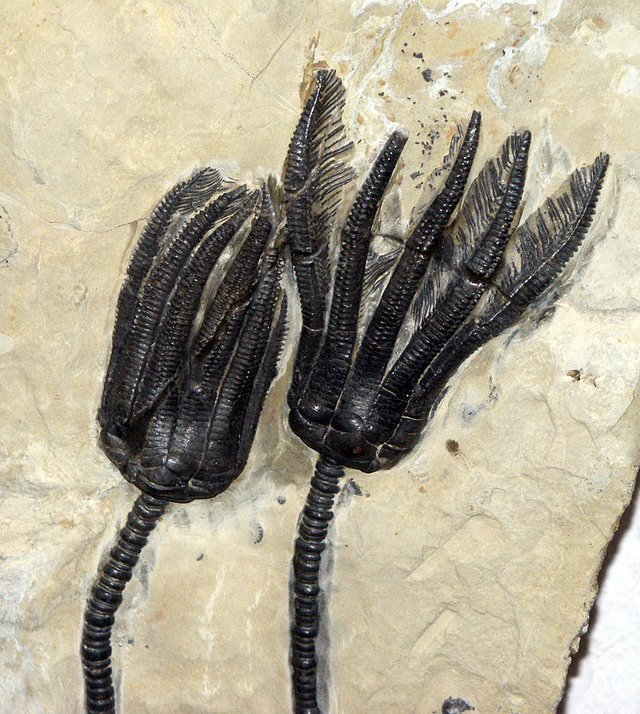
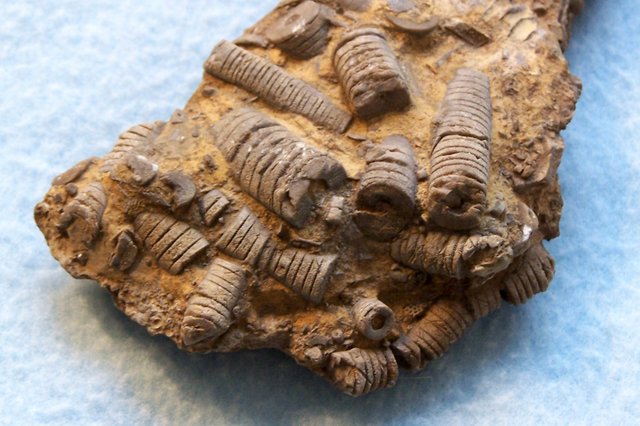
The inside seems to be made of of crinoids stems.
commons.wikimedia.org
commons.wikimedia.org
They fall apart into those little disks.
Thanks for the reply! Very nice pics, also. I forgot to mention in the post that the outside layer is agate. For a better description of the stuff on the inside, it’s a mass of little balls, and the ones that are broken in half are what look like the crinoid stems.
I have a saw to cut this in half for a better look, but I want to gain a better understanding of it in case cutting it up would devalue it.
Thanks again :)
Are you saying the inside is made up of balls rather than disks?
Here’s a better pic of the insides. The wet part in the upper corner is where I just tested it with vinegar.
Does it react to a weak acid? Like HCl?
I have tried vinegar with no reaction on either the shell or the insides. It does not bubble or fizz like it would on limestone.
Never heard of using vinegar for that test, interesting.
Can you scratch the material with a common nail or flip-knife?
If so, can you do the acid test again on the powder that forms when you scratch the material a little?
Of course, only if there is a part of the sample you do not mind having a scratch on.
I try to scratch the surface with a pocketknife, and it laughs at me. Not even a mark on it. The stuff on the inside is softer, able to be scratched slightly and chipped by the tip of the knife.
The vinegar thing was a trick I learned when I was young as a field identification for limestone. The acid reacts with the limestone and produces carbon dioxide bubbles.
Perhaps more background on the area where this was found will be helpful. In Wyoming there is a rather large area where a specific type of petrified wood occurs called Eden Valley. The reason this wood is unique is that it was submerged in water and encased in algae before it could rot. As a result, the petrifaction process created much opal, basically silica (quartz) that formed under water. I suspect the shell of this specimen is opal, just not a precious type, because the material resembles many other pieces I recovered from the same area.
Yeah, if you cannot scratch it with a pocket knife than silica seems reasonable. But silica ooids are something I have never heard of...
This is another chunk of the opal from Eden Valley, specifically, the Blue Forest. Both this piece and the one in question came from the same area on the same trip. The crystal druzy on the top is calcite.
Another piece of blue opal from the same trip.
This is a piece from the same area but a different trip that I have polished on the ends to show off the swirling of the wood and the opal.
I don’t know if these can help identify my mystery rock, but it should help rule out a few possibilities.
That totally looks like the outside of your mystery rock!
Agreed. What was it that got petrified, though. Seed? Fruit maybe? This has been my mystery...
Thanks for your help :)
Great photos!